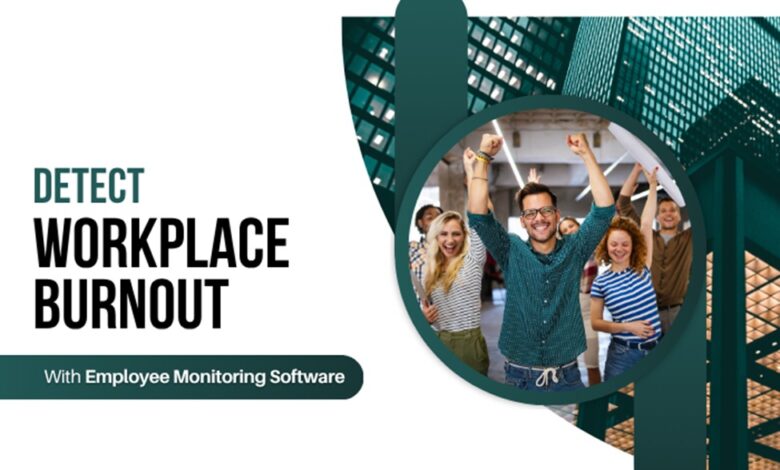How To Detect Workplace Burnout With Employee Monitoring Software?

Burnout doesn’t just happen overnight.
It gradually takes hold—through long work hours, skipped breaks, mounting stress, and emotional exhaustion. What starts as stress can evolve into disengagement, poor performance, or even full-blown exhaustion.
In today’s demanding work culture, ignoring the signs of burnout can cost businesses more than just productivity. It impacts employee morale, increases turnover, and ultimately hurts your profits.
But what if you could prevent burnout before it takes over?
That’s where employee monitoring software comes into play. Not as a micromanagement tool, but as a proactive solution for understanding how your team works—and how they feel while working. Used correctly, it becomes a foundation for healthier work habits, stronger teams, and better outcomes.
Understanding Workplace Burnout: The Silent Threat
Burnout is more than just feeling “over it.” The World Health Organization defines it as a syndrome resulting from chronic workplace stress that hasn’t been successfully managed. It typically shows up as:
- Constant fatigue
- Cynicism or detachment from the job
- Declining efficiency and focus
It’s a condition in which employees lose their sense of connection to their roles. And while burnout is an individual experience, its ripple effects impact the entire team—from reduced productivity to increased absenteeism and turnover.
Why Burnout Often Goes Undetected?
Most employees don’t raise their hands and say, “I’m burning out.”
Instead, they push through the fatigue until it becomes too heavy to hide. This makes early detection difficult—especially in hybrid or remote work setups where physical cues are absent.
That’s why employers need smart, data-backed tools to help identify the subtle warning signs. And that’s exactly what employee monitoring software offers.
How Employee Monitoring Software Helps Detect Burnout?
Let’s break down how this software empowers organizations to not only detect burnout early but also actively prevent it:
1. Uncovering Hidden Patterns of Overwork
Working extra hours now and then isn’t a problem. But when it becomes a pattern—consistently staying late, skipping lunch, or logging in after hours—it’s a red flag.
Employee monitoring software helps track these habits. It provides data on total work hours, active screen time, idle periods, and overtime trends. With this visibility, managers can identify employees who may be pushing themselves too hard and offer support before burnout hits.
2. Promoting Healthy Breaks and Recovery Time
Breaks aren’t just a luxury—they’re necessary for mental reset and sustained focus. Yet many employees (especially remote workers) forget to take them.
Monitoring tools can detect when someone’s been glued to their screen for hours without pause. With this information, gentle reminders or wellness prompts can be introduced. Some platforms like EmpMonitor even allow break requests within the system, reinforcing a culture that values rest and recovery.
3. Encouraging Work-Life Balance
One of the top causes of burnout? Poor work-life balance.
By comparing workload data with actual hours worked, employee monitoring software helps employers ensure that expectations are reasonable. This makes it easier to set boundaries, schedule tasks fairly, and prevent teams from feeling stretched too thin.
When employees can fully unwind outside of work, they come back energized, focused, and ready to perform at their best.
4. Addressing Team-Wide Issues Before They Escalate
Sometimes burnout isn’t limited to one person—it spreads across entire departments due to unrealistic deadlines or poor management practices.
With aggregated data, monitoring software highlights broader patterns: missed deadlines, performance dips, or rising stress indicators across a team. This allows leaders to act quickly—whether it’s realigning goals, adding resources, or initiating team wellness initiatives.
5. Optimizing Productivity Without the Pressure
Monitoring isn’t about spying—it’s about strategic insight.
By understanding how tasks are being completed—what time of day is most productive, how long projects take, and how workload is distributed—managers can create smarter workflows. It prevents the overloading of top performers and ensures underutilized employees are brought into the fold.
This leads to better results, without pushing anyone to the brink.
6. Supporting Better Conversations with Real Data
Gut instincts matter—but data makes them actionable.
With real-time insights into time management, task tracking, and productivity trends, leaders can hold more informed one-on-ones. Instead of vague check-ins, managers can address specific concerns, identify roadblocks, and offer personalized support that actually helps.
This builds a feedback culture grounded in clarity and care—not assumptions.
7. Building Trust Through Transparency
Many employees fear monitoring will feel intrusive. That’s why how you introduce it matters.
When leaders are transparent about the purpose—explaining that employee monitoring software is used to promote well-being, balance workloads, and prevent burnout—it creates buy-in. Employees feel seen, not surveilled. Respected, not restricted.
Trust grows when the system is used to help, not control.
Real Results: How Monitoring Software Improves Workplace Health
Here’s what companies are already experiencing when they integrate employee monitoring software with empathy:
- Reduced absenteeism: By catching burnout early, fewer employees take unexpected sick days.
- Improved engagement: Workers feel supported, leading to stronger focus and motivation.
- Better retention: Employees are more likely to stay in environments where they’re cared for.
- Higher performance: Balanced workloads result in more efficient, high-quality output.
Tools like EmpMonitor offer detailed dashboards, productivity reports, task tracking, and custom alerts—all designed to give leadership actionable insights while empowering employees with autonomy and fairness.
Best Practices for Using Employee Monitoring Software Respectfully
- Be clear about the purpose – Emphasize support, not surveillance.
- Get employee input – Involve employees in defining clear expectations and establishing boundaries.
- Focus on patterns, not moments – Use data to identify trends, not punish small missteps.
- Protect privacy – Only track what’s necessary and maintain confidentiality.
- Celebrate improvements – Recognize when balance, productivity, and morale go up.
Final Thoughts: It’s Time to Rethink Monitoring
Burnout is no longer something you can afford to ignore.
It’s costly, contagious, and completely preventable—with the right approach.
Employee monitoring software isn’t a watchdog—it’s a wellness tool. When implemented thoughtfully, it helps leaders support their teams with empathy and data. It turns scattered observations into proactive action, creating a culture of care, clarity, and consistency.
So, if your goal is to build a productive, engaged, and emotionally healthy workforce—this is your moment to act.
Start supporting your team smarter. Choose employee monitoring software that empowers, not pressures. Explore how EmpMonitor can help you build a workplace that thrives

